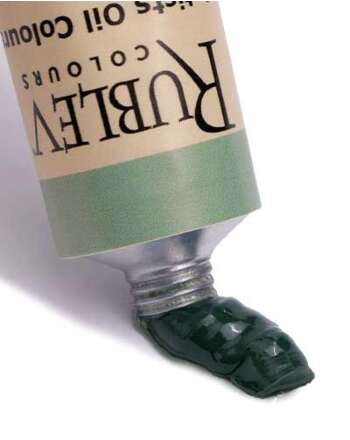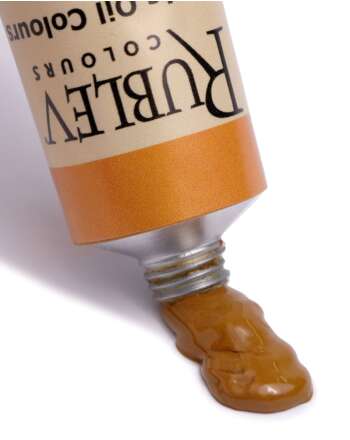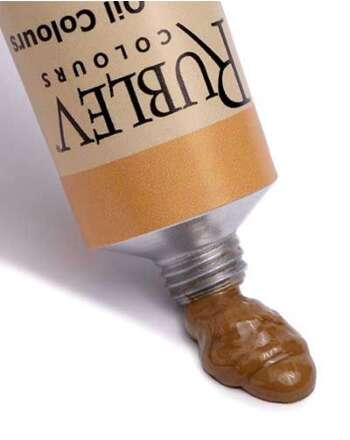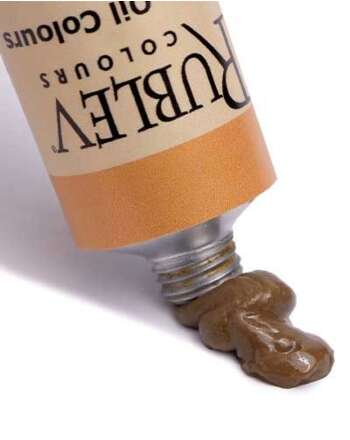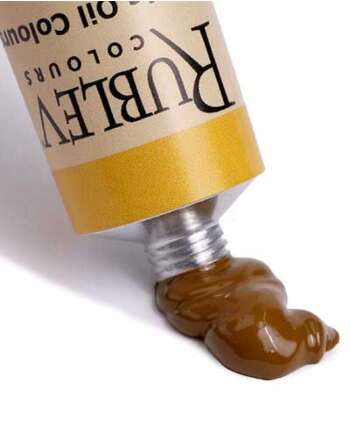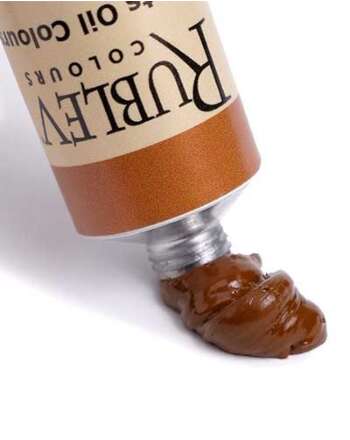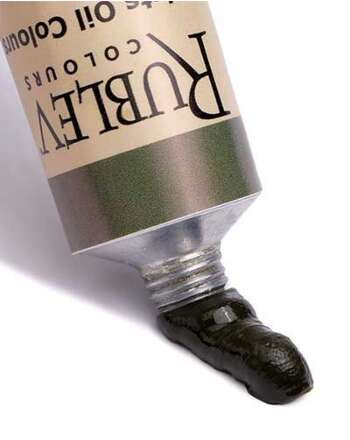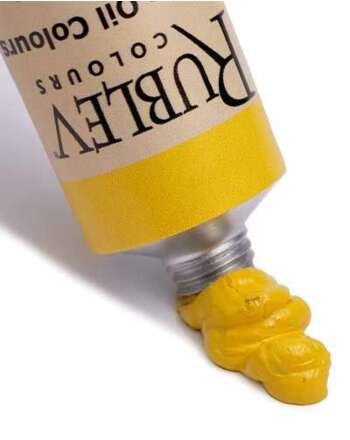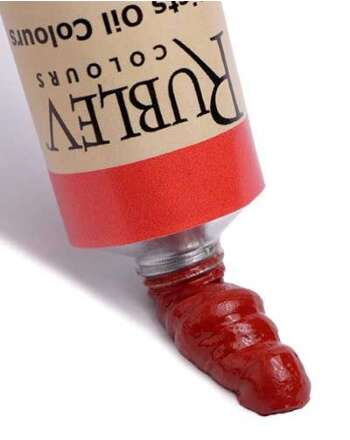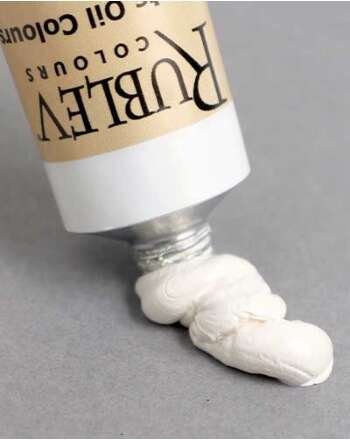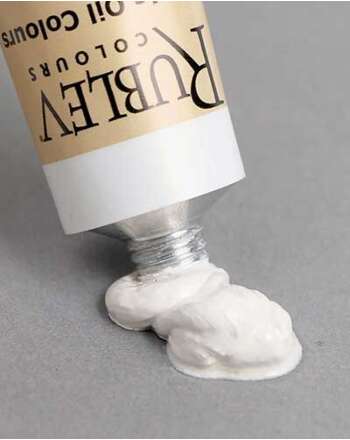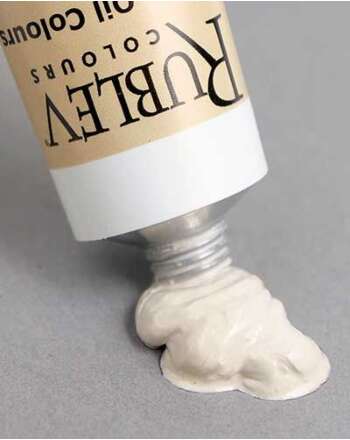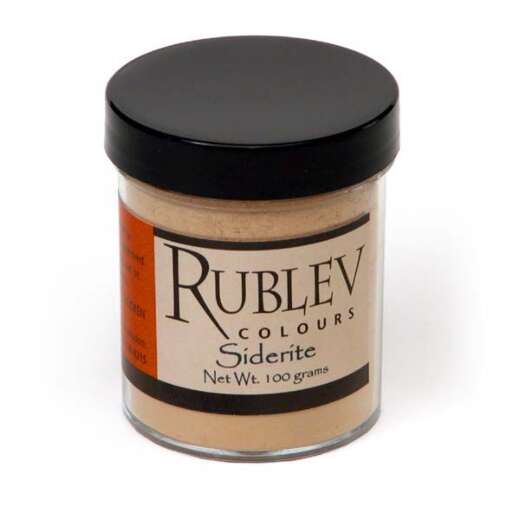How and Where to Use Low Tinting Oil Colors

Teresa Oaxaca has been using transparent pigments for about a year and a half now, and a blog post of this nature has been on her to-do list ever since. Seldom very popular (unless the paint tube is labeled the ever famous "transparent oxide yellow"), little known and less understood, most people question why someone would want to go to the trouble of producing, let alone painting with a weak pigment. In the age of cadmium and other bright hi-key pigments, earth colors have, at turns, come into question. Why not mix it down? Why settle for a lower chroma?
By Teresa Oaxaca
I've been using transparent pigments for about a year and a half now, and a blog post of this nature has been on my to-do list ever since. Seldom very popular (unless the paint tube is labeled the ever famous "transparent oxide yellow"), little known and less understood, most people question why someone would want to go to the trouble of producing, let alone painting with a weak pigment. In the age of cadmium and other bright hi-key pigments, earth colors have, at turns, come into question. Why not mix it down? Why settle for a lower chroma?

The Sunset Limited, oil on canvas, 62"×42". Unsold.
Aside from the apparent responses such as "dependency, paint film sturdiness, fast drying rate, low cost, tradition, limited palette," I would like to go over some of the not so well covered reasons that I favor these paints from time to time. Some are on my palette at all times, and others come in and out. The paints I will be discussing are Rublev Colours Artist Oils or Rublev Colours Pigments, made by Natural Pigments, and include Pink Pipestone, Siderite, Vicenza Earth, Transparent Yellow Felsite, Hrazdan Yellow, and Mica Lead White. I will also be presenting finished works and closeups of my paintings that feature these colors significantly enough to talk about.
A small, freshly prepared hand-ground batch of Vicenza Earth. At the time this was made, this color was only available in pigment form—now, it is available as an oil color.
Pink Pipestone is a little-known favorite of mine.

Detail from The Sunset Limited

Detail from Washington Baroque

Washington Baroque, oil on canvas, 56"×36". Unsold.
Mica Lead White below (darker) and Lead White #2 above
One of the first low-tinting colors I played around with was Mica Lead White. The name and idea intrigued me, as did all of the lead pigments at the time. I was just coming off a titanium white spree, and this new flexible stringy paint excited me. Mica is a ground-up mineral powder than can be added to lead white. It lends it a darker color and lower tinting strength. While not technically a transparent pigment, you will see how this white plays second fiddle to many of the colors you will mix it with, thus rendering it less tinting. I use this white primarily when painting a dark passage in the shadows, and I don't want my color too cold or "chalky." I also use it on my white drapery and cloth, masks, and what have you, when these objects are not receiving as much light as other brighter objects in their vicinity. In the Washington Baroque painting above, you can see how I have alternated between Mica Lead White and brighter Lead White to achieve a sense of form and turning on the man's tuxedo and chest.
The tinting strength of Siderite (top swatch) compared to a similar but much stronger pigment Antica Green Earth (bottom swatch).
You will notice how similar the two pigment looks even when strung out with lead white, the only difference being a slightly cooler tint in the Siderite. Notice how much extra paint was needed for the Siderite to match the first tone that the Antica Green Earth produced quickly and with much less pigment.
It is for this "weakness," this subtlety that I prize transparent pigments. I use my Siderite as the baby brother to my Antica Earth Green, which allows me to throw in liberal amounts of pigment into my turning or cooler mixtures, particularly in the light to mid-tones, all while having no fear of going too dark or grey or over-modeled. Because I can use the Siderite with impunity, I avoid the trap of painting with too little paint and thus making streaky thin passages in my lights (which should be bold) or my transition halftones (which should be smooth, silky and unobtrusive).
While not swatched in this article, it is safe to assume that Pink Pipestone acts the same way as Siderite, partnered up with a strong earth red such as Venetian Red, a color notorious for being difficult to handle due to its high tinting strength. I use it for light tones and save the Venetian Red for my darks.
Vicenza Earth (bottom swatch) and Siderite in the middle
Another color that I would like to draw your attention to is the elusive Vicenza Earth. Perhaps one of the weakest tinters, it's more tan than green causing me sometimes to confuse it with Siderite (so it's a good thing I am writing this article and labeling my tubes!). I don't partner this color with any others per se; instead, it is my all-around useful weapon for graying or neutralizing my other pigments. It's the joker card of the pack! It does this very efficiently and seems not to alter the color it's amending very much. I love it for reasons that perhaps only classical painters would understand; artists who have labored over cast paintings and vases and, above all, "flesh color" in figure paintings. These objects all require much skill and sometimes many mixtures of color and value to create just the desired amount of roundness, and suddenly they make the object pop off the canvas, so to speak. But sometimes, after a long day, when the paint is beginning to set up on you, and you can't quite seem to get it together to remix and match that transition tone you had in time, or you discover to your delight/horror that you have to take the chroma down a few notches on one of these mixtures, this color comes in handy. You can apply it fresh, unmixed to the area you want to neutralize or "gray," and it gets the job done most of the time. It's gentler than adding black (never a good idea) or an umber.
Vicenza Earth lowers the chroma of a red mixture (above) and Chrome Ocher (below).
Still even more subtle (which in this case is what we want), Vicenza Earth neutralizes and lowers the chroma of Maya Blue (on the right), Maya Blue left on its own on the left.

The Nutcracker, 38"×25", oil on canvas. Unsold.
In The Nutcracker, I used Transparent Tavush Green Earth in the flesh tones instead of a high-tinting green such as viridian.
Another transparent color that I enjoy making use of is Transparent Yellow Felsite. You can see where I am going with this; my palette has high-tinting colors (which will be covered later) and low-tinting colors to complement them. So here is my low tinting yellow. I used to use Transparent Yellow Oxide, but in my interest in using Natural Pigments, I have replaced it with this color instead. I use Hrazdan Yellow, too (it's peeking out from underneath the Felsite), which is darker and slightly more useful to me, so I may return to it when my tube of Felsite runs out. In my painting Laughing Queen pictured above, I have used these transparent yellows in the dress and the baroque wig. It helps me to get that golden, shimmering glint of lace and silk. I also like this color for turning bright yellows, such as the tulips you see in this painting.
Transparent Yellow Felsite (bottom right)
Transparent yellows help me to put the gold in gold cloth and other shiny things.

Transparent yellow at work in the aristocrat pierrot's shiny attire.
Detail of Camouflaged, 20"×16", oil on linen mounted ACM panel. Unsold.
All of the polka dots in Salisbury Fool were amended with a little bit of Vicenza Earth so as not to let them compete with the brightness of the hat and wrist lace and daisies clutched in the subject's hand.

Pulcinella, oil on canvas, 25"×47" with artist-made frame. Unsold.
Lots of Mica Lead White in the Venetian Commedia Dell'Arte Rigid Sugar Loaf hat, with pure Lead White reserved for the highlight in the center.
Where to Find Colors Mentioned in Article
Low Tint Strength Oil Colors
Other Colors Mentioned in this Article


